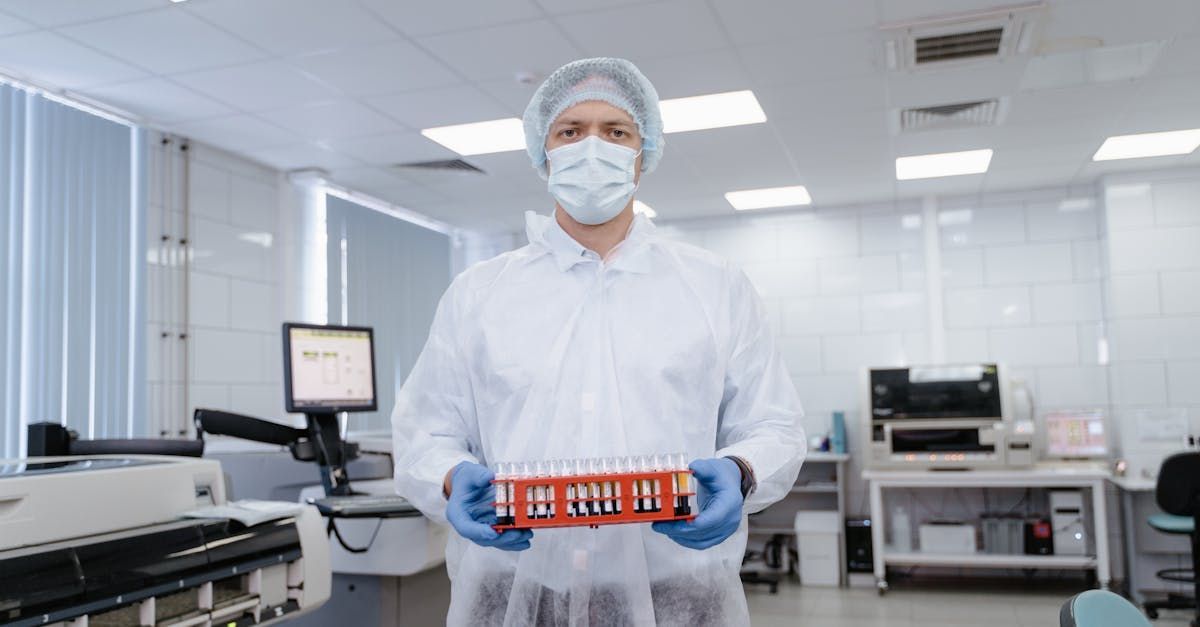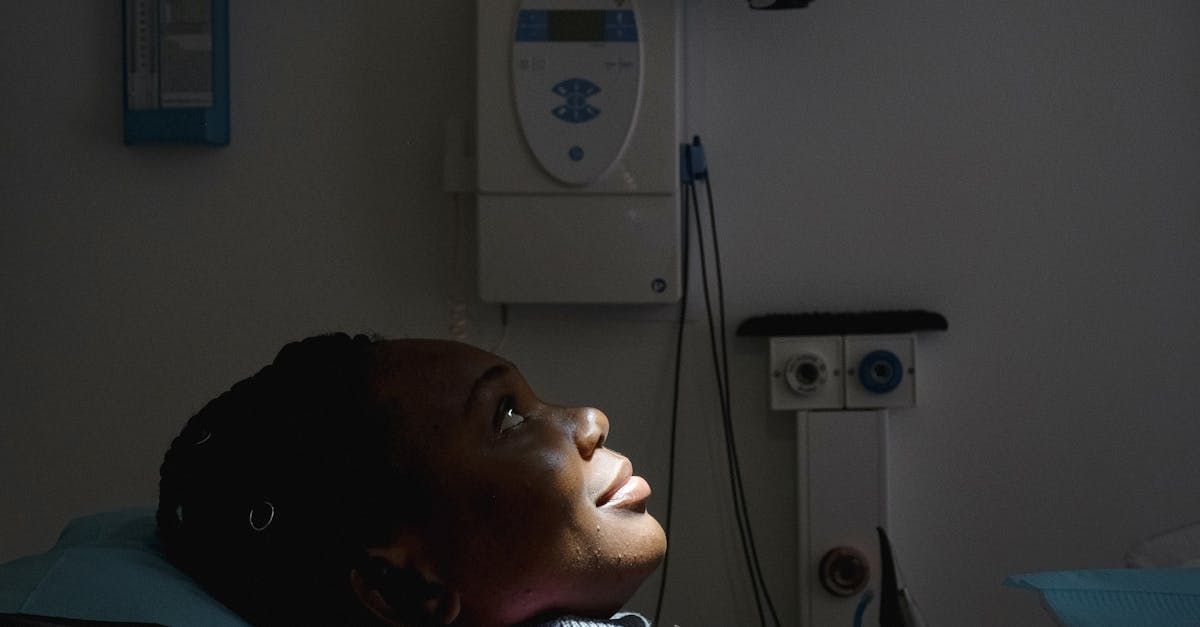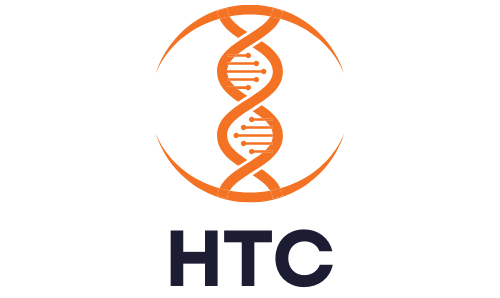HealthTech Innovations in Infectious Disease Control
Infectious diseases have a profound impact on global health, affecting millions of lives and challenging healthcare systems worldwide. From historic pandemics like the Spanish flu to recent outbreaks such as COVID-19, infectious diseases have consistently tested our ability to respond effectively. Innovations in HealthTech have become crucial in the fight against these diseases, offering new tools and strategies for prevention, detection, and treatment. This blog explores the latest HealthTech innovations in infectious disease control, highlighting their potential to transform public health outcomes.
The Challenge of Infectious Diseases
Infectious diseases continue to be a major global health threat. According to the World Health Organization (WHO), infectious diseases cause millions of deaths annually. The COVID-19 pandemic, for instance, has resulted in over 6 million deaths worldwide and disrupted economies and societies on an unprecedented scale. Similarly, diseases like Ebola, Zika, and influenza have caused significant morbidity and mortality, highlighting the need for effective control measures.
Traditional methods of infectious disease control, such as vaccination, quarantine, and sanitation, have been vital in managing outbreaks. However, these methods often face limitations, such as delayed detection, inadequate response capacity, and logistical challenges. Innovations in HealthTech offer new avenues to overcome these barriers and enhance our ability to control infectious diseases.
Digital Surveillance and Early Warning Systems
Digital surveillance is a cornerstone of modern infectious disease control. It involves the use of digital tools and platforms to monitor disease activity, detect outbreaks, and provide early warnings. HealthMap and BlueDot are examples of digital platforms that aggregate data from various sources, including social media, news reports, and official health channels, to identify potential outbreaks.
HealthMap, developed by researchers at Boston Children’s Hospital, uses real-time data analytics to monitor disease outbreaks globally. During the COVID-19 pandemic, HealthMap provided early warnings about the spread of the virus, allowing health authorities to take proactive measures. Similarly, BlueDot, a Canadian startup, uses artificial intelligence (AI) to analyze global travel patterns and disease reports, successfully predicting the spread of infectious diseases like Zika and COVID-19.
Case studies demonstrate the effectiveness of early warning systems in detecting outbreaks. For example, during the 2014 Ebola outbreak in West Africa, digital surveillance tools played a crucial role in tracking the spread of the virus and coordinating response efforts. By providing timely information, these tools enable health authorities to implement targeted interventions and prevent widespread transmission.
Diagnostic Innovations
Advances in diagnostic technologies have revolutionized infectious disease detection. Point-of-care testing (POCT) and rapid diagnostic tests (RDTs) offer quick and accurate diagnosis, enabling timely treatment and reducing the spread of infections. Innovations such as CRISPR-based diagnostics and mobile labs have further enhanced diagnostic capabilities.
CRISPR-based diagnostics leverage the gene-editing technology CRISPR to detect specific genetic sequences associated with pathogens. These tests are highly sensitive and can provide results within minutes. Mobile labs, equipped with advanced diagnostic tools, can be deployed to remote and resource-limited settings, improving access to testing during outbreaks.
For instance, during the COVID-19 pandemic, Abbott’s ID NOW rapid test provided results in just 15 minutes, significantly enhancing testing capacity. Another notable example is the GeneXpert system, which offers rapid molecular testing for diseases like tuberculosis and HIV. These innovations have improved disease detection and enabled health systems to respond more effectively to outbreaks.
Telehealth and Remote Monitoring
Telehealth has emerged as a vital tool in managing infectious diseases, especially during the COVID-19 pandemic. It enables remote consultations, reducing the risk of transmission and ensuring continuity of care. Telehealth platforms facilitate virtual doctor-patient interactions, remote monitoring, and the delivery of healthcare services to patients in isolation or quarantine.
Remote monitoring technologies, such as wearable devices and mobile health apps, allow healthcare providers to track patients’ health status in real-time. For example, during the COVID-19 pandemic, the Oura ring, a wearable device, was used to monitor the vital signs of healthcare workers, helping to detect early symptoms of the virus.
Telehealth platforms like Teladoc and Amwell have seen a surge in adoption, providing virtual care to millions of patients. These platforms have been instrumental in managing chronic diseases, mental health issues, and routine healthcare needs, while minimizing the risk of infection. The use of telehealth and remote monitoring has enhanced healthcare access, improved patient outcomes, and optimized resource utilization.
AI and Machine Learning in Predictive Analytics
Artificial intelligence (AI) and machine learning (ML) have transformed predictive analytics in infectious disease control. These technologies analyze vast amounts of data to identify patterns, predict disease spread, and inform public health responses. AI-driven predictive models and risk mapping tools provide valuable insights for decision-makers.
For instance, Google’s AI-based flu prediction model, Flu Trends, utilized search query data to predict flu outbreaks with remarkable accuracy. Similarly, the COVID-19 Mobility Data Network, a collaboration between tech companies and academic institutions, used mobile phone data to model the spread of COVID-19 and inform policy decisions.
Case studies highlight the impact of AI in improving public health responses. During the Zika virus outbreak, researchers at Northeastern University developed an AI model that predicted the spread of the virus based on climate and travel data. This information enabled health authorities to allocate resources and implement preventive measures in high-risk areas.
AI and ML have the potential to revolutionize infectious disease control by providing real-time insights, optimizing resource allocation, and enhancing the effectiveness of interventions. As these technologies continue to evolve, their applications in public health will expand, offering new opportunities to combat infectious diseases.
Vaccine Development and Distribution
Vaccination is one of the most effective strategies for controlling infectious diseases. Innovations in vaccine development, such as mRNA technology and nanoparticle vaccines, have accelerated the production of safe and effective vaccines. The rapid development and deployment of COVID-19 vaccines exemplify the potential of these innovations.
mRNA vaccines, such as those developed by Pfizer-BioNTech and Moderna, use synthetic messenger RNA to instruct cells to produce a protein that triggers an immune response. These vaccines were developed and approved in record time, demonstrating the potential of mRNA technology to address future pandemics. Nanoparticle vaccines, which use nanoparticles to deliver antigens, offer another promising approach to vaccine development.
Efficient vaccine distribution and monitoring are critical to achieving widespread immunity. Digital tools, such as vaccine management platforms and cold chain monitoring systems, ensure the safe and timely delivery of vaccines. For example, the Vaccine Management System (VMS) developed by the Indian government has streamlined the distribution of COVID-19 vaccines, improving access and equity.
Successful vaccine rollouts, such as the polio vaccination campaign and the COVID-19 vaccination drive, highlight the importance of coordinated efforts and technological innovation in achieving public health goals. These initiatives have saved millions of lives and prevented the spread of infectious diseases, underscoring the value of vaccines in disease control.
HealthTech Solutions for Public Health Education
Public health education is essential for disease prevention and control. Digital tools and platforms, such as mobile apps and social media campaigns, have enhanced public health communication, reaching diverse audiences and disseminating vital information.
During the COVID-19 pandemic, the World Health Organization (WHO) launched the WHO Academy app, providing up-to-date information and guidance to healthcare workers and the general public. Social media platforms, such as Facebook and Twitter, have been used to combat misinformation and promote health behaviors, such as vaccination and social distancing.
Case studies of effective public health education initiatives demonstrate the impact of digital communication. For instance, the Pulse app, developed by UNICEF, provides real-time information on health emergencies and disease outbreaks to communities in Africa. This app has improved health literacy and enabled timely responses to public health threats.
Digital health education tools have the potential to enhance public awareness, promote preventive behaviors, and support disease control efforts. By leveraging these tools, health authorities can engage communities, address misinformation, and empower individuals to take proactive steps to protect their health.
Notable Labs: Pioneering HealthTech Innovations in Infectious Disease Control
In the ever-evolving landscape of global health, infectious diseases pose a constant and formidable challenge. The recent COVID-19 pandemic has underscored the critical need for innovative solutions to detect, monitor, and treat infectious diseases swiftly and effectively. At the forefront of this innovation is Notable Labs, a company that leverages advanced genetic and molecular analyses to revolutionize infectious disease control. By integrating these cutting-edge techniques into standard healthcare practices, Notable Labs is setting a new standard for precision medicine in public health.
Notable Labs employs state-of-the-art genetic and molecular analysis techniques to understand and combat infectious diseases at a fundamental level. These analyses allow for the precise identification of pathogens and the understanding of their genetic makeup. This level of detail is crucial for developing targeted treatments and vaccines that can effectively neutralize these pathogens. By collaborating with healthcare providers, Notable Labs ensures that these advanced techniques are seamlessly incorporated into routine healthcare practices, making them accessible and affordable for all patients.
The success of Notable Labs lies in its collaborative approach. By working closely with insurers, healthcare providers, and researchers, the company pioneers innovative healthcare solutions that address the complexities of infectious diseases. This collaboration ensures that the treatments developed are not only scientifically sound but also practical and scalable. It facilitates the creation of comprehensive healthcare solutions that can be rapidly deployed in response to emerging health threats.
At the core of Notable Labs' strategy is a commitment to evidence-based practices. The company places a strong emphasis on collecting and analyzing robust clinical data to support the development of effective healthcare solutions. This data-driven approach ensures that the treatments and interventions proposed are backed by solid scientific evidence, enhancing their efficacy and safety. It also supports the development of reimbursement policies that recognize the value and cost-effectiveness of precision medicine, making these advanced treatments more accessible to patients.
Notable Labs exemplifies the transformative potential of precision medicine. By integrating cutting-edge medical advancements into everyday healthcare, the company significantly improves patient care and health outcomes. Personalized treatments tailored to the genetic and molecular profile of each patient ensure that interventions are more effective and less likely to cause adverse effects. This personalized approach not only enhances patient outcomes but also optimizes resource utilization, reducing the overall burden on healthcare systems.
As a leader in the field, Notable Labs is paving the way for a future where personalized healthcare is the norm. The company's innovative approach ensures that each patient receives the most effective and individualized treatment possible. This level of care sets a new standard for healthcare, one where advanced genetic and molecular analyses are routinely used to inform treatment decisions. It marks a significant shift from the one-size-fits-all approach to a more personalized, patient-centric model of care.
The integration of HealthTech innovations into infectious disease control represents a significant advancement in medical science. Companies like Notable Labs are leading this charge, demonstrating the profound impact that precision medicine can have on improving patient outcomes and making healthcare more efficient and effective. By harnessing advanced genetic and molecular analyses, Notable Labs is revolutionizing the way we detect, monitor, and treat infectious diseases, setting a new standard for healthcare worldwide. As we look to the future, the continued support and investment in innovative HealthTech solutions will be crucial in addressing the ongoing challenges posed by infectious diseases and improving global health outcomes.
Challenges and Ethical Considerations
Implementing HealthTech solutions in infectious disease control presents several challenges and ethical considerations. Data privacy and security are paramount, as the collection and sharing of health data raise concerns about confidentiality and consent. Ensuring equitable access to technology and addressing disparities in healthcare delivery are also critical.
Regulatory and compliance hurdles can impede the adoption of HealthTech innovations. Navigating complex regulatory environments and obtaining approvals for new technologies require significant time and resources. Strategies for overcoming these challenges include engaging stakeholders, advocating for supportive policies, and fostering collaboration between public and private sectors.
Ethical considerations, such as obtaining informed consent and ensuring fairness in the distribution of resources, must be addressed to maintain public trust and uphold ethical standards. Transparent communication and community engagement are essential to addressing ethical concerns and promoting the responsible use of technology.
Future Trends and Innovations
The future of HealthTech in infectious disease control is promising, with emerging trends and innovations poised to transform public health. Advances in AI, machine learning, and digital health tools will enhance predictive analytics, improve disease detection, and optimize response strategies.
Wearable devices and remote monitoring technologies will continue to evolve, offering new opportunities for real-time health monitoring and personalized care. Innovations in telehealth and mobile health will expand access to healthcare services, particularly in remote and underserved areas.
Collaboration between global health organizations, governments, and the private sector will drive the development and implementation of HealthTech solutions. Initiatives such as the Coalition for Epidemic Preparedness Innovations (CEPI) and the Global Health Security Agenda (GHSA) exemplify the power of collective action in addressing global health challenges.
Predictions for the next decade include the widespread adoption of digital surveillance systems, the integration of AI in public health decision-making, and the development of next-generation vaccines. These advancements will enhance our ability to prevent, detect, and respond to infectious diseases, ultimately improving global health outcomes.
Conclusion
HealthTech innovations are revolutionizing infectious disease control, offering new tools and strategies to combat global health threats. From digital surveillance and diagnostic technologies to telehealth and AI-driven predictive analytics, these innovations have the potential to transform public health and improve patient outcomes.
As we look to the future, it is essential to support and invest in HealthTech solutions that address infectious disease challenges. By leveraging technology and fostering collaboration, we can enhance our capacity to prevent and control infectious diseases, ensuring a healthier and more resilient world for all.










